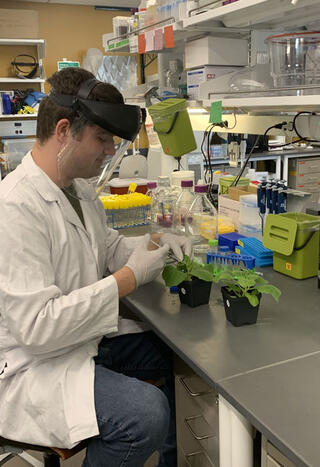Tyler Criss


As a student of Biochemistry at Michigan State University, I was already aware of the world-class research being performed here in Plant Science. As my studies have progressed, I have gained a marked interest in applying the efficiency and sustainability of organic systems to industry. The Great Lakes Bioenergy center focuses precisely on this maxim, and my experience in the GLBRC Summer Undergraduate Research Program has given me great insight on where, how, and why biology is applied to solve problems.
This summer, I worked in the lab of Dr. Bjoern Hamberger under the wing of Dr. Trine Andersen studying terpenoids and the enzymes that make them in Sorghum bicolor, an upcoming biofuel crop. Terpenoids are an ancient class of phytochemicals that serve manifold industrial purposes, from fragrances to medicine. If we can engineer bioenergy sorghum to produce valuable terpenoids in its waxy cuticle, we could for example grow medicine and fuel at the same time!
Therefore, to see what enzymes make what terpenoids in sorghum, I needed to clone out these enzymes and express them in another plant, and then analyze the compounds produced. I started with fourteen enzymes to characterize, so I had to do tons of molecular cloning. I chose this project so I could get laboratory experience to complement my computational biology experience, and I got an excellent experience out of it.
My experience in the Hamberger lab was great, and so was the time I spent with my cohort. When we weren’t touring fascinating bioenergy facilities, we were meeting up for lunch at Shaw Hall or walking around Grand River Avenue to stop at the many restaurants and stores. Getting to know them was a joy, and I look forward to seeing where their careers go from here. Overall, this program was an amazing experience!